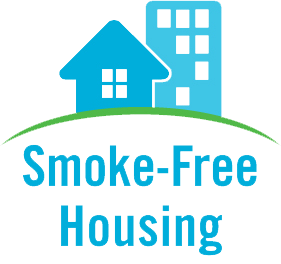Housing Quality Standards Inspection
HOMEOWNERS- Housing Quality Standards Inspection
The unit should be examined carefully by the owner and the tenant. Housing Assistance Payments cannot be made if the unit does not pass the HQS Inspection.
This checklist is not considered to be a complete list of reasons for failing a HQS inspection, but represents the most common failures:
- A working smoke detector with a live battery must be installed on every level of the unit, including in the basement and outside sleeping rooms. If any members of the family are hearing impaired, a detector for the hearing impaired must be installed.
- The entire unit, both inside and out, including all window components, must be free of cracking, scaling, peeling, chipping and loose paint. All defective paint must be scraped, painted and all paint chips disposed of properly. This prevents the exposure to possible lead-based paint poisoning.
- If there are four or more consecutive steps (inside or out), Handrails must be securely attached and steps may not be deteriorated.
- Porches or decks that are more than 30” above the ground level must have railings or protective barriers.
- Downspouts and gutters are not required but if present and damaged must be repaired or removed. Any damage to the unit caused by this condition must also be repaired.
- There cannot be any accumulation of garbage or debris inside or outside. Multi-family (4+) units must have refuse facilities provided, such as trashcans with lids, garbage chutes or dumpsters with lids.
- No electrical hazards may exist inside or outside the unit including no loose, hanging, or exposed wires. Light fixtures and light switches must operate properly. All three-prong outlets must be wired correctly and will be checked with a three-prong circuit tester at the time of inspection to assure safety.
- All light switches and outlets must have secured plate covers installed, free from cracks and chips.
- The main electrical breaker box must have blanks installed in all empty spaces and have the proper door according to code requirements.
- Every room used for living must have either two working outlets, or one working outlet and a permanently installed light fixture.
- All windows and doors accessible from the outside must have working sturdy locks. Loose or missing striker plates and split door jambs must be repaired.
- All windows and doors must be secure when closed and must be weather tight.
- All windows and doors accessible from the outside must have sturdy working locks. Loose or missing striker plates and split door jambs must be repaired.
- All windows intended to be opened must be able to open, stay up on their own or have the spring clips installed to hold them open. Screens must be provided for windows that open.
- All broken or severely cracked windows must be replaced.
- Every bedroom must have at least one window that opens.
- The bathroom must have either a window that opens or an operable exhaust fan. This includes additional bathrooms and half baths.
- If there is a bathroom with a toilet that is not hooked up to water and sewer lines, it must be repaired. If it is removed, the drain must be sealed.
- The hot water tank’s pressure relief valve must have a discharge line extending within 6-12 inches from the floor.
- All plumbing fixtures must be in proper working order. All leaks must be repaired.
- The flue pipe leading from the furnace and hot water tank must be installed correctly and must be sealed at the chimney.
- All rooms used for living must have an adequate heat source. Gas furnaces must be vented to the outside. Electric heat sources must be permanently installed and controlled by a separate thermostat. The heat source must be adequate to maintain the unit at 68 degrees when the temperature is below freezing.
- Furnace filters should be clean. The tenant should be instructed on replacement of filters.
- All ceilings, walls, and floors must be strong, sturdy and in their permanent positions. All holes must be patched.
- Floor coverings that are loose, torn, or frayed creating a tripping hazard must be repaired or replaced.
- All appliances, including built-ins, must be in complete working order. All burners on the stove must have knobs and operate properly.
- Holes in the foundation that would lead to pest or water infiltration must be patched.
- Basements must be free of major leaks, standing water, and mold accumulation.
- All garages or other building son the property also must be maintained according to regulations.




